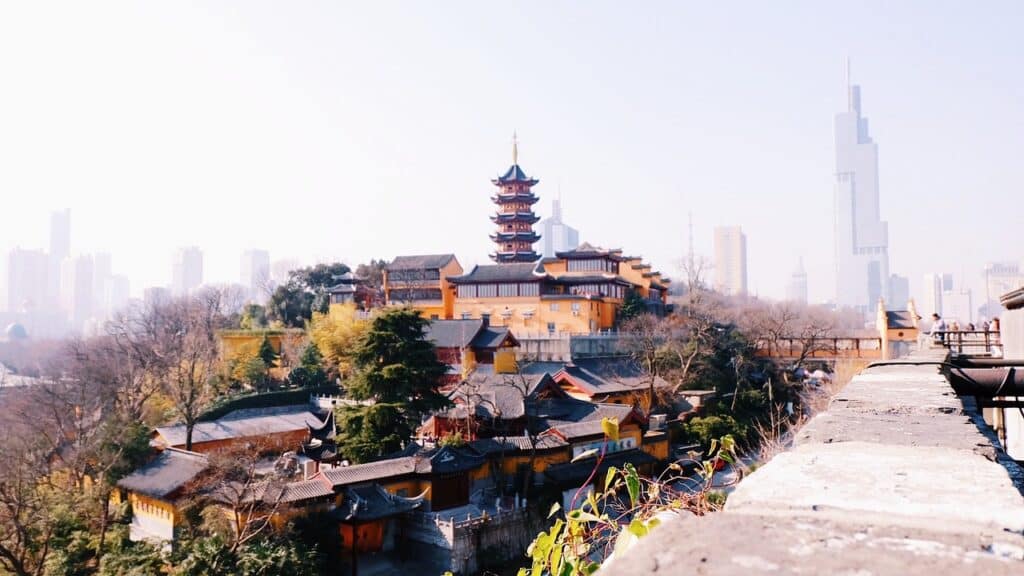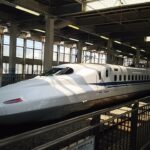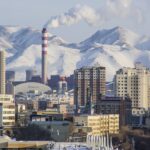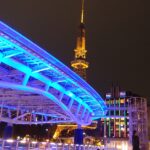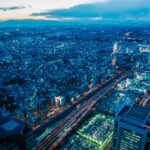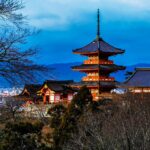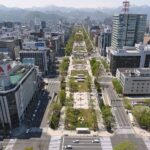One of the largest and most advanced public transportation systems in China is found in Nanjing, a significant metropolis. The city has an extensive system of buses, cabs, and subways, making getting around simple. With more than 279 miles of track dispersed across 12 lines, the Nanjing Metro system is one of the most sophisticated in the nation. The majority of the city and its suburbs are serviced by the city’s vast bus network. In Nanjing, taxi services are also easily accessible. The fares are typically extremely affordable, and the drivers are frequently amenable to haggling.
Metro: Basic information
Public transportation in Nanjing is simple and effective thanks to the metro system. There are a total of 12 lines in it. The Nanjing Metro Corporation runs these lines, which cover the entire city. Given that the trains typically travel at a speed of about 70 kilometers per hour, the metro system provides users with a quick and dependable option to navigate around the city. A total of 208 stations make up the metro system, and they are all connected to one another, making it simple for users to switch between lines. Passengers can easily reach their location because to the metro system’s connections to other public transit networks including buses and taxis.
The lines of the Nanjing subway system
Line 1 – Pale blue
The major direction of travel for Line 1 is north-south. Maigaoqiao is the northern terminus of the railway, which travels south to CPU (China Pharmaceutical University). Line 1 had 16 stops and a length of 21.72 kilometers when it was first opened in September 2005. The 24.5 kilometers long south expansion of Line 1 began running in May, 2010.
Line 2 – Red
Line 2 has 30 stops over its 43.4-kilometer length. From Yuzui in the southwest to Jingtianlu in the northeast, it primarily travels in an east-west path. The railway was extended west 5.4 kilometers, with 4 new stops leading to Yuzui Station.
Line 3 – Green
Line 3’s groundbreaking work began in January 2010. This line, which has 29 stations and a north-south layout, has been in operation since 2015. Its length is 44.9 kilometers.
Line 4 – Purple
East-West Line 4’s first section measures 33.75 kilometers. Since purple is the line’s branding color and the color of the trains, which were initially delivered in April 2015, the line is also known as A Zi (the Purple).
Line 7 – Dark green
A line known as Line 7 runs about northeast to southwest along the south bank of the Yangtze River. Construction on the remainder of the line began in November 2018. Additionally, this line is the first one in Nanjing Metro to deploy automated GoA4 trains.
Line 10 – Beige
The Olympic Stadium branch line of Line 1, which split off from Line 1 and became a component of Line 10, is the western expansion of Line 10. The line, which has 14 stops and a length of around 21.6 kilometers, began operating on July 1, 2014.
S-lines of nanjing metro
Line S1, which runs from Nanjing South Railway Station through Nanjing Lukou International Airport to Gaochun District, serves as the city’s airport express line. The complete route was supposed to have 13 stops and be 85.8 kilometers long. In time for the Nanjing 2014 Summer Youth Olympics, the first phase started on July 1. There are 8 stations along its 35.8 km length. Later, the second phase extension was converted to Line S9. The color of line S1 is teal.
The S3 line starts at the Nanjing South Railway Station, travels west, passing alongside high-speed rail trains on the cantilever along the edge of the Dashengguan Yangtze River bridge, before coming to an end at the Gaojiachong station in Qiaolin, southwest of Pukou District. Youfangqiao Station serves as a transfer point for Line S3 and Line 2, in addition to Nanjing South Railway Station, where travelers can change to Lines 1, 3, or S1.
- Phase one runs from Nanjing South Railway Station to Jiangbei New Area in Pukou over a distance of 37.53 kilometers and has 19 stations.
- Phase 2 is still in the planning stages and could, in the distant future, stretch from Phase 1 farther southwest to Hexian county. The color of line S3 is magenta.
Line S6, or the Nanjing-Jurong Intercity Railway, which runs 43.7 kilometers between suburban Nanjing and the nearby Jurong, opened. Starting at Maqun station and finishing at Jurong station, it is the first Nanjing Metro line to connect to other cities. The hue of Line S6 is lilac.
Line S7 beginning at Konggangxinchengjiangning station and finishing at Wuxiangshan station in South Lishui District, it is a continuation of Line S1 that travels further southeast. A few Line S1 trains keep running into Line S7. Pink is the color of line S7.
Luhe District and Pukou District are connected by the suburban metro line known as Line S8. The line’s length is 45.2 km, of which 34.1 km are elevated. There are 17 stations along the railway, including 6 underground and 11 elevated. It uses four-car sets of B-size trains that can travel at a top speed of 100 kilometers per hour. Orange is the color of Line S8.
Line S9 has a total length of 52.42 km, and it begins at Xiangyulunan station, the sixth station from Nanjing South Railway Station on Line S1. It then continues south to Gaochun District. Nanjing is the first city on the Chinese mainland where every district has a metro stop after it opened in December, 2017. Yellow is the color of Line S9.
Map of Nanjing Metro 2024 – Free Download in PDF
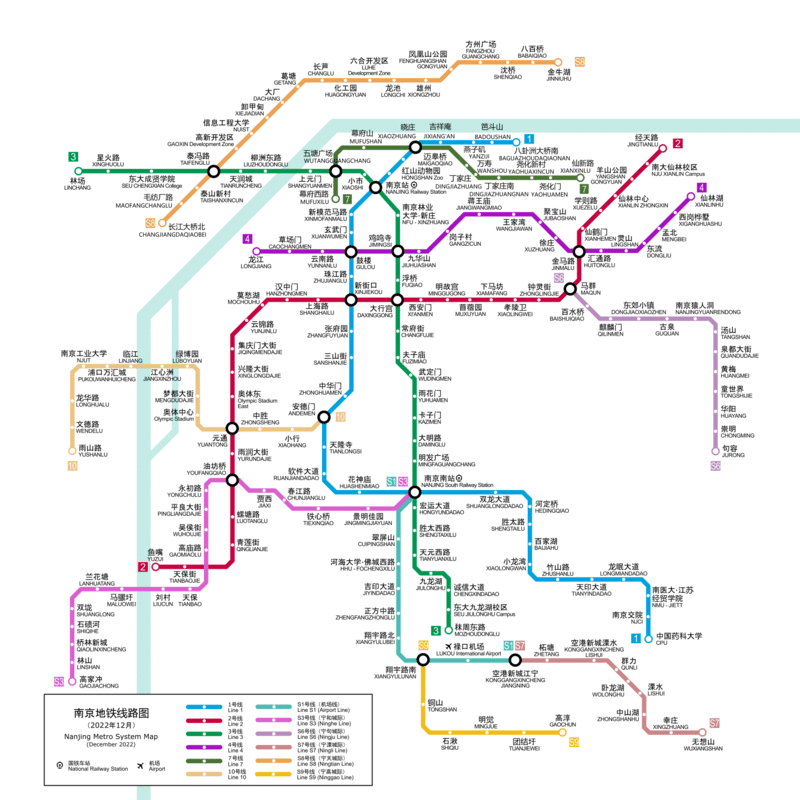
Click on the image and download the map of Nanjing´s underground system for 2024
To navigate the city, you must have the Nanjing Metro Map 2024. It offers a current map of all the metro lines and stations in Nanjing and is free to download in PDF format. The map is simple to read and comprehend, making it an excellent tool for visitors to the city. It is essential for anyone who wants to visit the city because it includes all of the important stations and lines as well as the surrounding locations. Travelers can easily plan their journeys and navigate the city thanks to the Nanjing Metro Map 2024, which offers a thorough overview of the area.
tickets for Transportation – Best types for travelers
Depending on the distance, single-use tickets and reusable Smart Cards can be purchased for a price ranging from 2 to 10 RMBs. A three-day, unrestricted use pass that 72 RMBs is offered for guests who plan to stay longer.
Public buses, taxis, and ferries are additional means of public transit in Nanjing. Bus single-use tickets cost as little as one cent, and taxi fare starts at fourteen cents. The Yangtze River ferry rides cost 2 per journey.
The three-day unlimited-use card, which costs 72 RMB, is the best choice for travelers visiting Nanjing for a brief period. This is an affordable way to see the city because it gives you unlimited travel on the Metro, buses, and ferries.
Timetables of the Metro system
An easy and effective way to go around the city is the Nanjing Metro system. The Metro’s operating hours vary according to the line but are typically 5:30 AM to 10:30 PM daily. Around 6:00 AM, the first train leaves from each station, and the final train leaves between 10:00 and 10:30 PM. Trains operate every 5 to 10 minutes during peak hours and every 15 to 20 minutes off-peak. The Nanjing Metro system makes it simple to visit many of the city’s attractions, making it a fantastic way to get to know the city.
What Are Other Options For Transportation In Nanjing?
Outside of the metro, there are numerous public transit alternatives in Nanjing. Buses, taxis, scooters, bicycles, and even carpools are among these. The most widely used mode of transportation is the bus, which is available almost everywhere in the city and has lines that go almost everywhere. Another excellent choice that provides convenience and quickness is taking a taxi. Bicycles and scooters are excellent for getting around town fast and affordably. Carpools are another option for individuals trying to cut costs, allowing numerous passengers to split the expense of a ride. In Nanjing, there is a public transit alternative for every requirement.
bus transportation in Nanjing
The Nanjing Public Transportation Group is the city of Nanjing’s primary bus company. This company runs about 1500 buses that may be seen all across the city. All routes are clearly defined and simple to follow. Passengers can buy a ticket at any bus stop to utilize the bus system, which can be paid for using cash or a public transit card.
There are numerous express buses in Nanjing in addition to the regular buses, and they offer direct service to well-known locations. These express buses cost more than the regular buses and are identified by a unique “E” sign. They also enable travellers to reach their destination more quickly and comfortably.
The bus lines 10, 11, and 12 in Nanjing are the busiest. These are the main lines that pass through the heart of the city and are the most often used means of transportation. Line 10 travels from the city’s north to south, and Line 11 travels from east to west. Passengers may quickly go to any location in Nanjing because to Line 12’s looping route around the city.
Nanjing has several taxis in addition to its bus system. For people who have a pressing need to travel somewhere, these are a practical solution. Taxis can be ordered in advance or flagged down on the street. The prices are affordable, and you can pay with cash or a transit card.
public TRAINS in Nanjing
One of the most significant cities in China is Nanjing, and an essential component of the city’s infrastructure is its public transportation system. Trains are a well-liked mode of transportation for both locals and tourists since they offer quick and affordable access to the city and its surroundings. Here is a look at how Nanjing’s public trains operate and the key train links to other adjacent cities.
The primary center of the city’s public train system is the Nanjing railway station. The station, which is in the center of the city, acts as the main point of departure and arrival for intercity and national rail services. From the station, passengers can board high-speed trains for trips to various regions of China as well as local trains for trips to nearby cities.
The Beijing-Shanghai High-Speed Railway, which connects Nanjing with Shanghai, and the Nanjing-Hangzhou Expressway, which connects Nanjing with Hangzhou, are the key routes tying Nanjing to adjacent cities. The Nanjing-Wuhan High-Speed Railway, the Shanghai-Hangzhou High-Speed Railway, and the Beijing-Kunming High-Speed Railway are other crucial linkages.
There are several local trains that connect Nanjing to the region’s smaller cities and towns in addition to these main train routes. Even while these services are typically slower than high-speed options, they might nevertheless be useful for getting around.
In Nanjing, you can buy public transportation tickets at the station or online through the official China Rail website. Most fares are extremely reasonable, and senior and student discounts are offered. Additionally, tickets can be purchased on board the train, though this is not typically advised due to the potential for higher prices.
How To Get From Nanjing Lukou International Airport (NKG) To The City Center With Public Transport?
The city center may easily be reached by public transportation from Nanjing Lukou International Airport. There are a number of public transportation choices available at the airport to take you into the heart of Nanjing, which is located about 40 kilometers away.
Metro is the quickest and most common method of transportation between Nanjing Lukou International Airport and the city center. Take the Airport Line 1 to the city center after landing at the airport. Since it just takes around 30 minutes, this is the quickest method to get there.
From the airport to the city center, you can also take the airport shuttle bus. The shuttle bus travels between 40 and 50 minutes and operates from 6 am to 11 pm. The Nanjing Railway Station, Nanjing East Railway Station, and Nanjing South Railway Station are just a few of the well-known terminals in the city’s core where it stops.
From the airport to the city center, buses are accessible for those seeking a more affordable choice. The buses leave every 40 to 50 minutes, from 6 am until 10 pm. The Nanjing Railway Station, Nanjing East Railway Station, and Nanjing South Railway Station are just a few of the well-known terminals in the city’s core where it stops.
how to spend 3 days in Nanjing?
You’ll need more than three days if you’re planning a vacation to Nanjing and want to take in all the city has to offer. Nanjing, the most populous city in China and the capital of Jiangsu Province, is a city rich in sights, sounds, and tastes. Here is the ideal itinerary for three days in Nanjing, regardless of your preferences for unusual encounters, excellent dining, or a lively nightlife.
Get to Know the City on Day 1
Take a tour of the city’s most well-known sites to kick off your trip. Get to the summit of Zijin Mountain so you may admire the beautiful views of Nanjing and learn more about its past. From there, proceed to the well-known Ming City Wall, one of China’s best-preserved city walls that was constructed in the 14th century. Don’t forget to spend some time exploring the Confucius Temple, a magnificent collection of temples and gardens that dates back to 1034.
You’ll want to take in some of Nanjing’s culture in the evening. Visit the crowded night market, which is brimming with sellers offering regional treats and items. Then watch a traditional Nanjing Opera performance to witness a 2,000-year-old style of Chinese theater.
Day 2: Investigate the regional cuisine
It’s time to check out Nanjing’s culinary scene on your second day there. In some of the best restaurants in the city, you may get classic Nanjing fare such salted duck and duck blood soup. Visit Lao Yangsheng for lunch; this neighborhood staple provides delectable fare including cooked pork with preserved veggies.
Visit the bustling Hunan Road night market for dinner so you may enjoy a variety of street fare. Don’t pass up the chance to sample the renowned salted duck from Nanjing. There are also lots of vendors selling conventional foods like noodles and dumplings.
Day 3: Shop and Have Fun
It’s time to explore the city’s stores and attractions on your final day in Nanjing. Start by going to the busy Qinhuai River neighborhood, where there are many shops selling anything from vintage items to contemporary apparel. Then proceed to the Confucius Temple Bazaar, where you may find a variety of authentic Chinese products.
It’s time to sample some of Nanjing’s nightlife after that. Go to the lively Xinjiekou district, where you can discover a wide range of bars and clubs. Visit Utopia, one of the city’s most well-liked rooftop bars, to cap off the evening.
You may enjoy the best of Nanjing with the help of this three-day itinerary. You can make the most of your time in this dynamic city by taking advantage of its distinctive attractions, delectable cuisine, and lively nightlife.
metro systems nearby to Nanjing
There are numerous additional metro systems in neighboring cities, in addition to Nanjing’s excellent metro system. Among them are the metro systems in Shanghai, Suzhou, Wuxi, and Changzhou. Since each of these networks is connected to the others, commuters may easily travel between cities. Additionally, the Nanjing Metro is linked to the high-speed rail system, enabling quick travel between cities in the area.
Summary of our guide for Nanjing
Since moving to Nanjing five years ago, I’ve grown to appreciate the city’s public transit system. The bus and subway systems are dependable, effective, and reasonably priced. I enjoy how the city has invested in infrastructure to make transportation so accessible, and I find it simple to navigate the routes and schedules. I’ve had the chance to use public transit to travel around the city and the neighboring areas, and I’ve seen firsthand why Nanjing is a terrific place to live. The public transportation in Nanjing makes it simple to see the city’s rich culture and different attractions. It is also helpful for getting around town swiftly and economically.
Top 5 FAQs and answers about Nanjing public transport?
What kinds of public transit are offered in Nanjing?
- A wide variety of public transportation options are available in Nanjing, including buses, subways, taxis, and trams. The most widely used modes of public transit are buses and subways, with subway travel being the quickest and most practical. While trams are a slower, but more beautiful, mode of transportation through the city, taxis are also common and a fantastic way to reach your location fast.
Is Nanjing’s public transit secure?
- In Nanjing, the public transit system is typically secure. You should always be aware of your surroundings and take simple safety precautions in any city. Peak hours are typically congested on the buses and subways, so it’s critical to be vigilant and watch your valuables.
How much does using the city’s transportation system in Nanjing cost?
- Depending on the mode of transportation you use, public transit in Nanjing has different prices. Buses cost 2 yuan, and depending on the distance, the cost of the subway varies from 3 to 9 yuan. Taxis and trams are slightly more expensive, with fares ranging from 10 to 20 yuan for taxis and 5 to 10 yuan for trams.
Is it possible to buy passes or tickets for Nanjing’s public transportation system?
- Yes, there are numerous ways to buy passes or tickets for the city’s public transit system in Nanjing. At the ticket booths at metro stations and bus stops, you can buy single-ride tickets or multi-ride passes. Additionally, you can buy tickets or passes online by utilizing a mobile payment service like WeChat or Alipay.
Is there a Nanjing public transportation planning app that I can use?
- Yes, you may plan your trips on Nanjing’s public transit using a variety of apps. The most widely used app is Nanjing Transit, which offers up-to-date schedules and route details for the city’s bus, subway, taxi, and tram systems. Additionally, the app provides functionalities like route planning and ticket purchasing.
Useful links

